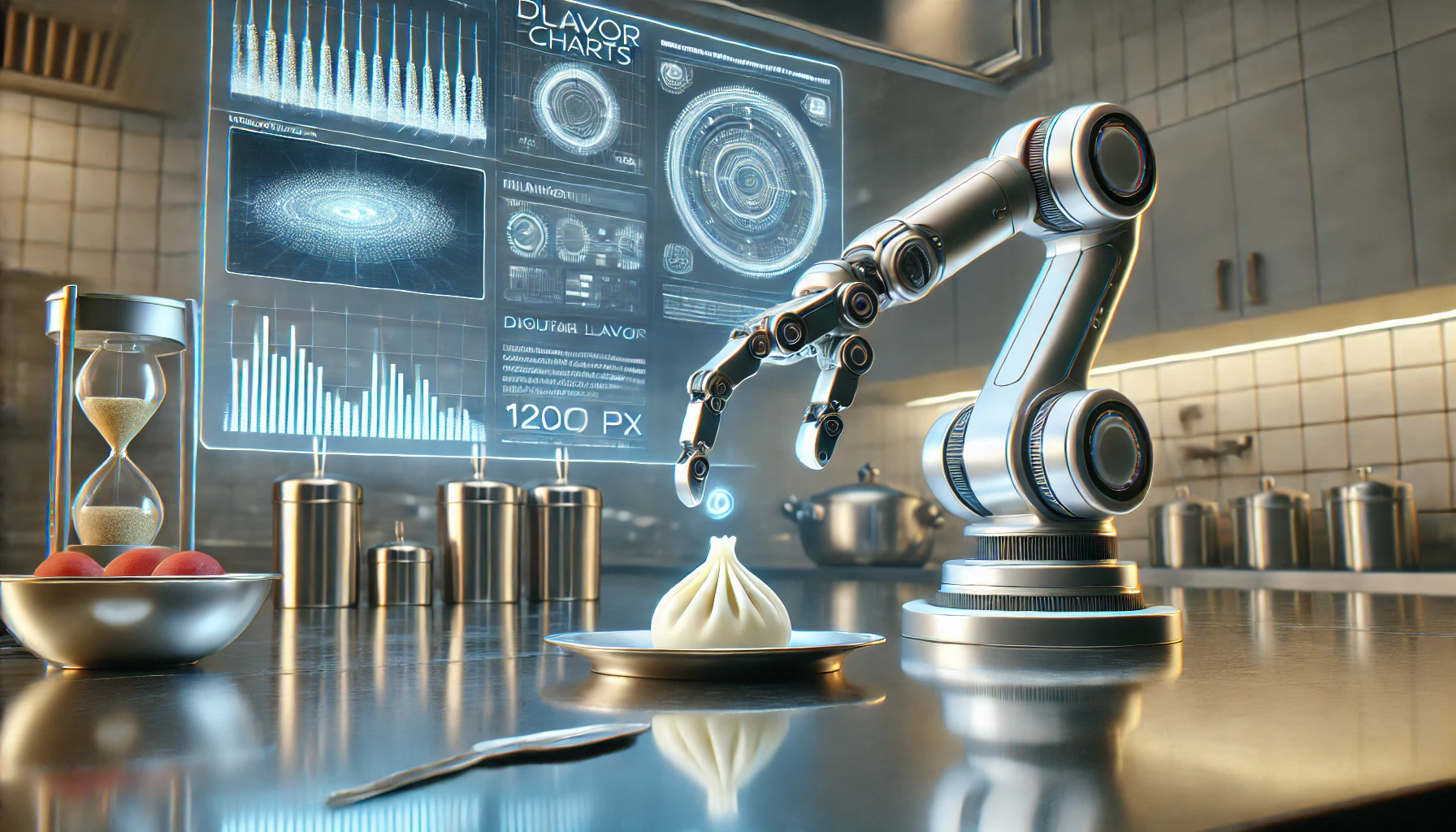Not long ago, the idea of a machine designing recipes sounded absurd — cooking was supposed to be purely human, an act of creativity and intuition.
But now, in 2025, artificial intelligence is quietly rewriting the rules of food creation — and dumplings are right at the center of this new culinary frontier.
AI-generated flavors, data-informed ingredient pairings, and even texture simulations are reshaping how chefs and home cooks think about recipes. It’s not about replacing creativity, but amplifying it.
Imagine asking an algorithm to design the perfect dumpling — one that balances sweetness, spice, salt, and umami based on millions of taste data points. That’s not science fiction anymore.
When AI Learns to Taste
AI systems like IBM’s “Chef Watson” and new platforms like FlavorPrint are already generating original recipes using data from global cuisines. They analyze how ingredients interact chemically and culturally — pairing flavors not by tradition, but by mathematical compatibility.
Applied to dumplings, that means a model could design a filling that combines the savory balance of Japanese gyoza, the spice profile of Sichuan chili oil, and the aroma of Thai basil, predicting how they’ll harmonize before you even cook them.
Chefs are beginning to use these systems as collaborators — not competitors.
The process still starts with human inspiration, but AI helps test what’s possible, faster and more accurately than ever.
The Rise of Algorithmic Creativity
Around the world, AI-designed food isn’t just about novelty — it’s about discovery.
In Melbourne, a few experimental chefs are using generative algorithms to design dumpling fillings based on local seasonal ingredients. By inputting data on freshness, fat content, and moisture levels, the system suggests flavor combinations optimized for balance and sustainability.
One chef described it this way:
“The AI isn’t cooking for us. It’s giving us options our brains wouldn’t have thought of.”
That collaborative spirit — machine precision meeting human intuition — is what makes AI-designed dumplings more than a gimmick. It’s a new stage in the evolution of culinary creativity.
What an AI-Designed Dumpling Might Look (and Taste) Like
So what happens when you let a machine experiment with the world’s most versatile food form?
Here are a few examples generated in early trials by AI-based food design labs:
- Miso–Mango–Ginger Dumplings: A fusion of umami and tropical acidity that balances sweet and savory in unexpected harmony.
- Coconut–Beetroot–Shrimp Dumplings: A vibrant color palette with textural contrast that maximizes visual appeal for social media.
- Kangaroo–Kaffir Lime Dumplings: A distinctly Australian take suggested for sustainable, local protein innovation.
They may sound unconventional, but AI’s recommendations are based on data — chemical compound compatibility, regional preferences, and even heat retention during cooking.
For chefs, this means faster prototyping; for diners, it means endless variety.
The Human Touch: Why AI Still Needs Us
AI can analyze data and predict flavor pairings, but it can’t feel hunger. It can’t recognize nostalgia in a meal or understand why a grandmother’s dumplings taste better than any algorithm’s version.
That emotional core — the story behind the recipe — still belongs entirely to the cook.
Our own exploration in Dumplings and the Art of Comfort: How Food Brings People Together reminds us that food connects people because it carries memory, emotion, and care.
AI may simulate flavor, but it can’t simulate love — at least not yet.
Where Australia Fits in This Future
Australia’s growing food innovation ecosystem makes it a natural home for this kind of culinary experimentation.
With its diverse immigrant cuisines and emphasis on sustainability, AI-designed dumplings could soon become a testbed for ethical food technology — balancing creativity with environmental responsibility.
It’s easy to imagine an Australian dumpling brand launching a line of AI-developed fillings using local ingredients and climate-smart sourcing.
That would merge technology and tradition — precisely the balance that defines Australia’s modern food identity.
What It Means for Home Cooks
While professional kitchens experiment with AI-generated recipes, home cooks are next in line. Platforms like DishGen and PlantJammer already use machine learning to generate personalized recipes based on pantry ingredients and dietary preferences.
Soon, you might be able to upload your fridge inventory and have an algorithm suggest an optimized dumpling filling — no wasted food, no random guesswork.
Pair that with our own guide on The Ultimate Guide to Dumpling Styles Around the World and you could experiment with machine-generated flavor ideas across cultural boundaries.
The Future of Dumplings Is Data-Driven
Artificial intelligence won’t replace the art of cooking — it’s redefining it.
For dumplings, that means the next wave of innovation won’t come from kitchens alone but from code.
What’s exciting isn’t that machines can create — it’s that they can collaborate.
When human curiosity meets algorithmic creativity, food becomes not just sustenance, but exploration.
Maybe the future of comfort food isn’t about going back to old recipes — it’s about teaching new minds, even artificial ones, how to fold flavor into meaning.
